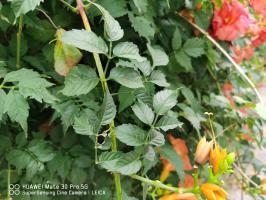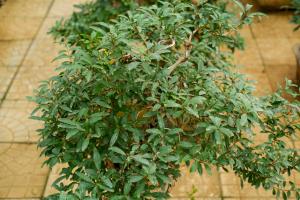How to Kill Insects in Plant Pots
Having insects in plant pots can be frustrating and damaging for your plants. Insects can chew holes in leaves and stems and spread diseases to healthy plants. Fortunately, there are ways to get rid of insects and keep your plants healthy. Here are some effective methods:
Remove Dead Leaves and Weeds
Dead leaves and weeds provide the perfect environment for insects to breed and multiply. They also reduce air circulation and make it difficult for the soil to dry out between watering. Regularly clean your plant pots to remove dead leaves and weeds. This will prevent insects from taking over your plant pots, creating a welcoming environment for beneficial insects like ladybugs, which help control pest populations naturally.
Use Natural Insecticides
Avoid using synthetic insecticides, which can be harmful to beneficial insects, pets, and children. Choose natural insecticides instead, such as neem oil, diatomaceous earth, and insecticidal soap. These natural products are effective against a variety of insects and are safe to use around food crops. Follow the instructions carefully when using natural insecticides, and always wear protective clothing and gloves.
Handpick Insects
If you have a small number of insects in your plant pots, handpicking them is an effective and affordable option. Wear gloves and pick the insects off the plants by hand, putting them in a bucket of soapy water. This will kill the insects and prevent them from returning. Handpicking is effective for larger insects like caterpillars and snails.
Attract Beneficial Insects
Beneficial insects like ladybugs, lacewings, and parasitic wasps prey on insects that damage plants. By planting flowers that attract these beneficial insects, you can reduce the population of harmful insects in your plant pots. Some beneficial flowers include marigolds, dill, fennel, and yarrow. Make sure to provide habitat and shelter for these insects by providing small piles of rocks, twigs, and leaves.
Clean and Sterilize Plant Pots
When you have finished dealing with an insect infestation, it is important to clean and sterilize your plant pots to prevent a reinfestation. Wash your pots with soap and water, rinse well, and then soak them in a solution of one part bleach to nine parts water for at least 10 minutes. This will remove any eggs or insect larvae that may still be present. Be sure to rinse the pots well after sterilizing them.
Conclusion
Insects can be a nuisance in plant pots, but there are many ways to get rid of them and keep your plants healthy. By removing dead leaves and weeds, using natural insecticides, handpicking insects, attracting beneficial insects, and cleaning and sterilizing your plant pots, you can effectively control insect populations and prevent damage to your plants. Remember to always follow the instructions carefully when using insecticides and to wear protective clothing and gloves.

 how many times do yo...
how many times do yo... how many planted tre...
how many planted tre... how many pine trees ...
how many pine trees ... how many pecan trees...
how many pecan trees... how many plants comp...
how many plants comp... how many plants can ...
how many plants can ... how many plants and ...
how many plants and ... how many pepper plan...
how many pepper plan...






























